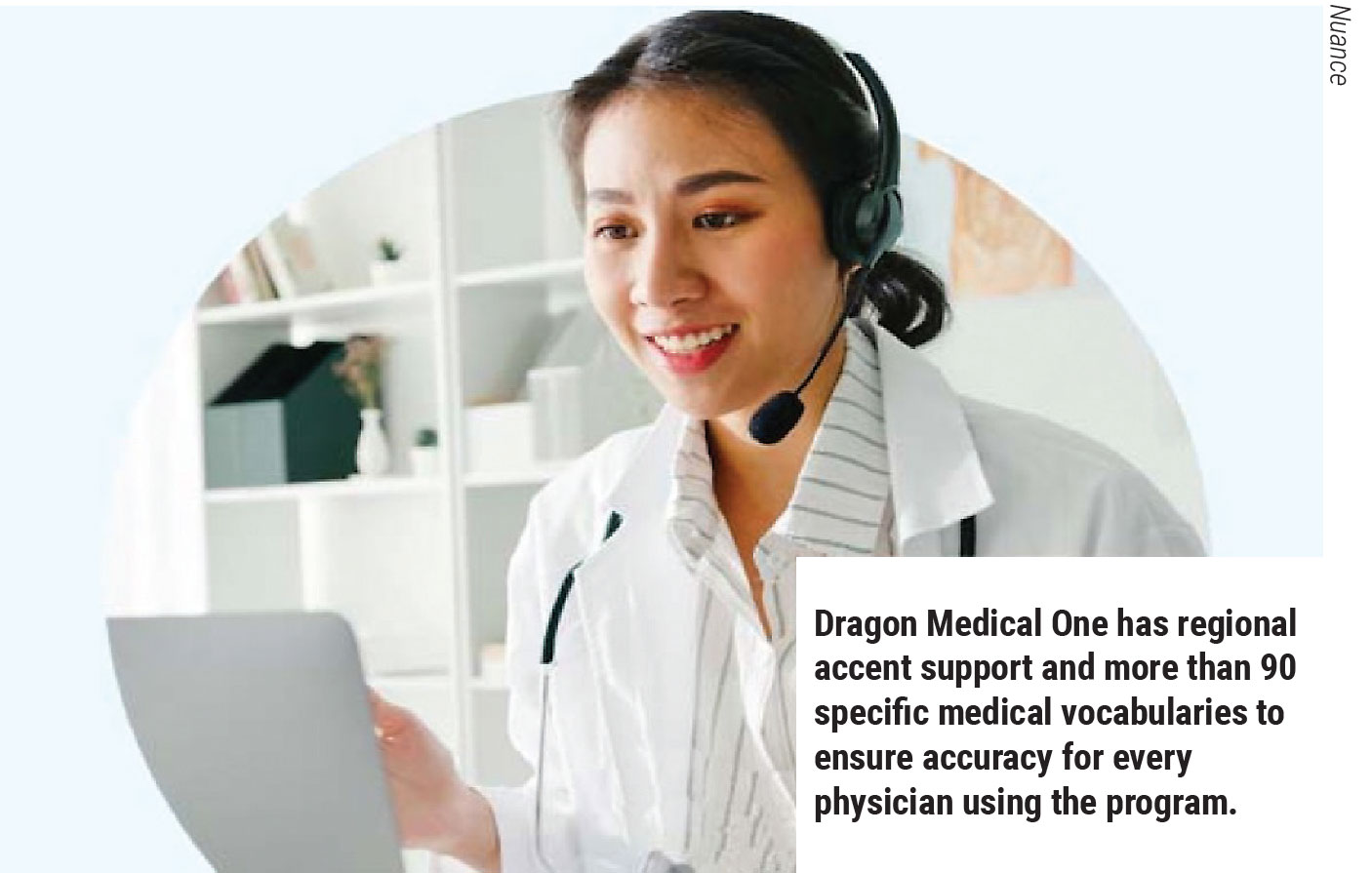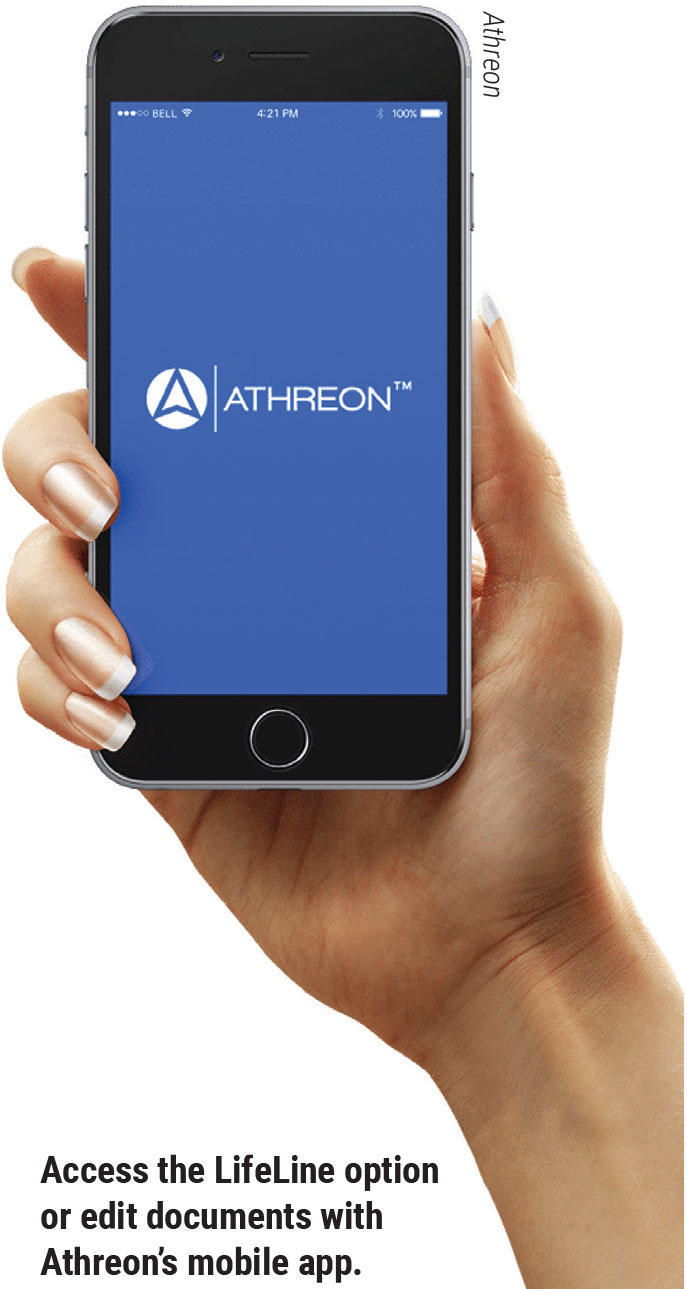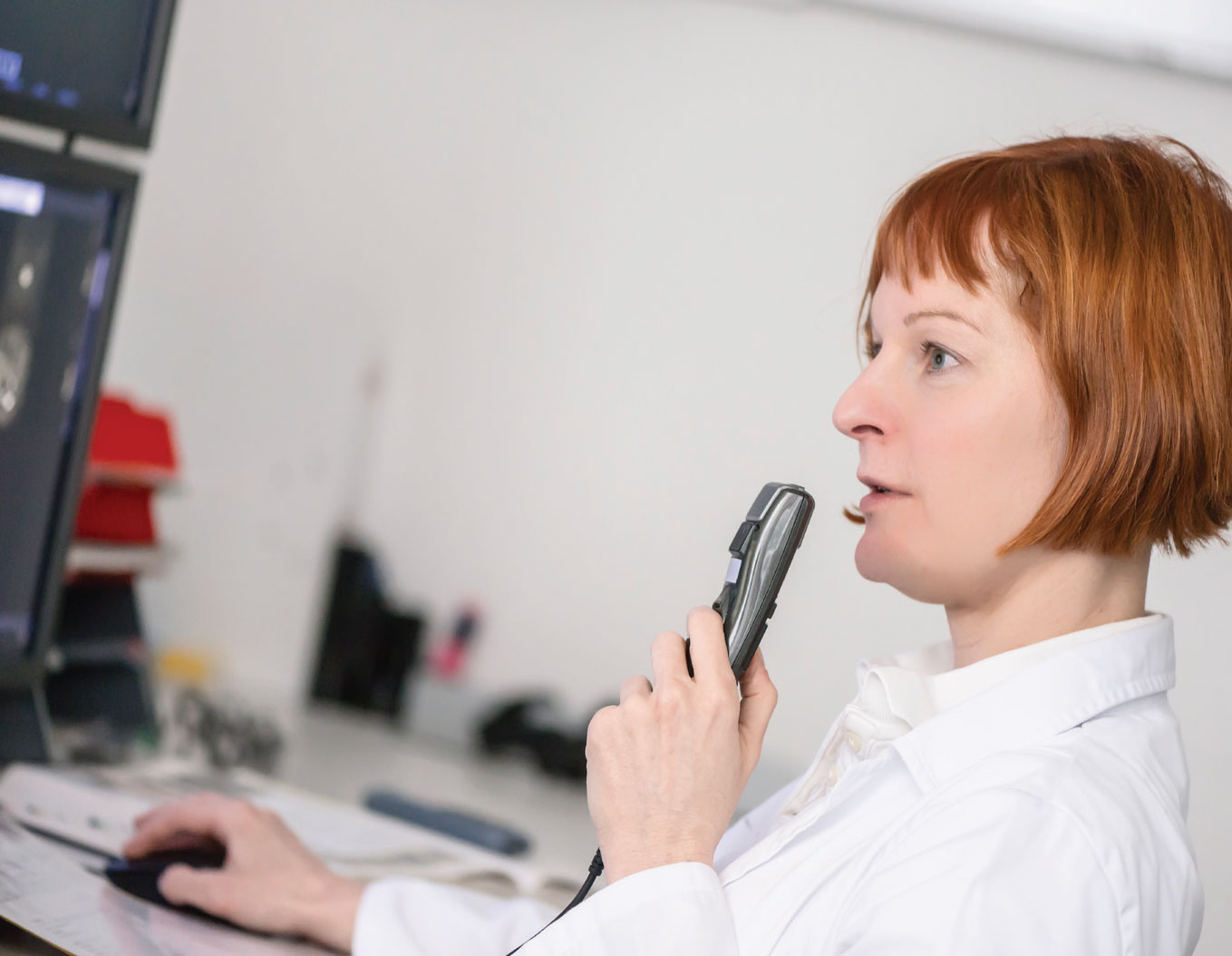For decades, speech-to-text software has been advancing and becoming more prevalent in the modern world. Now, anyone with access to the internet can download or purchase a speech recognition program and implement it into their daily lives. This dictation tool is meant to eliminate the time spent typing notes for business, education or personal reasons. But how is this technology viewed in the medical field, and what programs are available distinctly for health care?
In a 2019 study by Honorato S. Altar, Jr. and Raymund C. Sison from De La Salle University in Manila, Philippines, focused on the experiences of medical transcriptionists while using speech recognition technology. In their study, they discovered that speech recognition software became a stressor for older transcriptionists who were more comfortable with manual typing, but the technology was faster than manual transcription. However, they reported that the accuracy of the speech recognition wasn’t strong, and usually needed manual edits.1 For one Maryland ophthalmologist, these observations ring true.
“I type faster than I dictate, and it’s also cheaper,” says ophthalmologist Vike Vicente, MD, of Eye Doctors of Washington when asked why he stopped using speech-to-text platforms to generate his letters to referring doctors. He explains, “In 2011, [my practice] switched to a new EMR system that would create letters to the referring doctor based on the typed note.” In other words, Dr. Vicente was introduced to a new technology that he believed was more effective than speech recognition. Though speech recognition software has gotten a subpar reputation over the years, companies are developing software geared specifically toward medical fields that aim to provide increased speech-to-text accuracy and efficiancy.
One medical dictation platform, Augmedix, was built to provide high-quality patient care. Their argument for why speech-to-text services are important is that they allow doctors to interact with their patients without spending time at the computer during the exam. This is an aspect that can be found in many dictation tools created for medical transcription. Larger communication companies like Nuance focus their artificial inteligence solutions on customer engagement as well as health care. The relationship between a doctor and their patient can be crucial, so having technology to assist with maintaining connections and interactions is a positive tool for medical practice.
In the end, everyone is different, and some doctors may find medical dictation services to be beneficial. Next, we’ll examine different speech-to-text platforms, their unique features, and what makes them useful in the medical setting.
A Reliable Powerhouse
 |
Dragon Medical One, created by Nuance, is a subscription-based speech-to-text service for health-care professionals. Since its release of PowerScribe in 1996, Nuance says it’s been advancing dictation and transcription technology, and is known for its effectiveness and efficiency. Dragon Medical One is HIPAA-compliant and supports more than 90 special medical vocabularies, including ophthalmology. The intuitive AI learns the consumer’s voice and mannerisms to become more accurate and efficient over time. Nuance claims that Dragon Medical One is 99-percent accurate when voice-typing medical transcription. They use a cloud-based dictation software to constantly update and improve quality of performance.
Dragon Medical One is compatible with more than 100 web-based and mobile electronic health records, which can decrease time spent filling out paperwork no matter which system the physician uses. If the speech-to-text program doesn’t pick up on the user’s voice, the PowerMic mobile app allows the user to amplify their voice to let the AI better understand their vocabulary.
A one-year subscription for Dragon Medical One costs the user $99/month, plus a $525 one-time fee. Additionally, the AI can only learn the accent and phrases of a single individual. This means doctors can’t share the program, or else the AI will get confused and output errors. However, the user can log in to their subscription on multiple computers. For doctors who work remotely, they can continue to use Dragon Medical One on their laptop. All information collected from home on Dragon Medical One can be accessed on a work computer or laptop in the office.
The Money Saver
Chartnote may be a more cost-effective option with various payment plans offered to the user. No matter the plan, Chartnote is HIPAA-compliant and compatible with most web-based EHRs when combined with a Google Chrome extension. The Basic Plan is free to all users, with limitations. Other plans such as the Premium and Professional Plans, cost money, but provide more features to the user. Both the Basic and Premium Plans limit the user’s dictation, allowing them to transcribe 15 to 20 minutes per month. By upgrading to the Professional Plan, users receive unlimited speech recognition and Chartnote’s most intelligent AI.
Chartnote offers a Team Plan that allows multiple users and devices access to the application’s features. For larger offices with multiple staff members, an account administrator can manage roles and the user experience through the program. The Team Plan is priced according to the number of users
Chartnote’s website explicitly states that their program is usable for various medical specialties, including ophthalmology. Unfortunately, the web application isn’t directly compatible with web-based EHRs, so users will need to download a Google Chrome extension provided by Chartnote to access this feature. This can cause some trouble and it can become time consuming if the user doesn’t use Chrome. Luckily, Chartnote offers a simple copy-and-paste tool that allows doctors to implement their transcription into an electronic health record.
Chartnote has many compatible features including mobile applications and tablet support. Physicians can use the mobile application to amplify their voice for voice-to-text dictation. If users own an iPad or other tablet device, they can handwrite their notes on the Chartnote mobile app, rather than typing them out on a document.
Options for Everyone
 |
Athreon began as a tech company exclusively specializing in speech technology for medical transcription. After 35 years, Athreon offers speech-to-text and cybersecurity solutions to various industries including medical, business and law. Athreon offers a multitude of virtual tools offered for medical specialists. Each tool is HIPAA-compliant and compatible with more than 1,500 EHR systems.
Athreon says its health-care documentation is available for more than 40 medical specialties, including ophthalmology, and their speech recognition is more than 98-percent accurate. TransIT is Athreon’s main proprietary speech-to-text process for health care. Users with this program can safely access their documentation via a web portal, mobile app or EHR interface. Athreon can configure most EHR interfaces to implement TransIT. The configurations can be made when Athreon connects with the user’s internal IT team at work as well as their EHR vendor.
If TransIT isn’t implemented into an EHR interface, then it needs a third-party tool to enter notes automatically into an electronic health record in real-time. Athreon’s LifeLine option enters clinical data into an electronic health record. This avoids the process of copy-and-pasting or scanning reports. LifeLine, a feature accesible online and on Athreon’s mobile app, records data for an electronic health records. Then, the company’s team of transcriptionists listens to the audio files, convert the audio into text, and imports it into the electronic health record. These transcriptionists are a part of Athreon’s AxiScribe service, a paid service that gives the user access to virtual scribes. Athreon offers trained transcriptionists specifically for ophthalmology reports.
If speech-to-text and virtual scribe services aren’t helpful, then the alternative speech recognition program,VoiceNote, may help simplify medical documentation. VoiceNote adapts to the user’s voice and mannerisms. The difference between TransIT and VoiceNote is that TransIT is a speech-to-text service that converts conversations into text, while VoiceNote takes that concept a step further and intelligently learns phrases, speech patterns and accents to provide a more enhanced documentation experience for the user.
Before purchasing Athreon’s products, it’s best to do some research and get a consultation. Having all these services is beneficial to the user since they can customize their own plan and pay for what they need, but doctors should invest time into figuring out which products they’ll need most.
Technology Eliminator
 |
|
Microphones are optional for most speech-to-text programs. Nuance, Chartnote, Athreon and Augmedix offer microphone mobile apps for their programs. |
Augmedix says it focuses on building the relationship between doctors and their patients by removing unnecessary time spent at the computer. This company rose in popularity for its implementation of Google Glass in the medical setting to assist with EHRs. Now focused on AI technology and speech recognition, the Augmedix Ambient Automation Platform is a HIPAA-compliant documentation software that provides speech recognition powered by Google Cloud. This allows Augmedix to frequently update and enhance the program’s speech recognition capabilities.
The technology behind Augmedix allows the user to have completely natural conversations. By using Natural Language Processing as well as Automated Speech Recognition, Augmedix can record a conversation, identify relevant content and transfer it into notes on the Augmedix dashboard. Also, notes can be edited using custom templates provided in the dashboard. While using this service, medical data specialists from Augmedix oversee the documentation to ensure quality. Furthermore, Augmedix supports more than 35 medical vocabularies, including ophthalmology terms.
This program also includes accessible features on the Augmedix mobile app. The app functions as a microphone to record discussions with patients without having to log in to a computer. During the patient’s exam, the dialogue is uploaded to the user’s Augmedix dashboard to be converted into notes for electronic health records. All notes can be uploaded from the dashboard to an electronic health record. Also, notes can be stored as reminders to notify the user about upcoming procedures. Notifications can be accessed and edited through the mobile app.
1. Medical transcriptionist’s experience with speech recognition technology. Presented at the 2019 Australasian Conference on Information Systems. https://aisel.aisnet.org/cgi/viewcontent.cgi?article=1096&context=acis2019. Accessed April 7, 2023.



